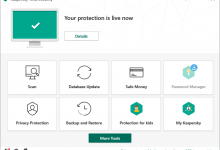
Now that we’re indoors because of the pandemic, most of us have our activities limited. Before, we could go out and have no problem with doing anything. However, because of COVID-19, governments have been imposing strict laws for people to stay inside. We’re now in the new normal today, and most of the stuff we do now have something to do with the internet.
If you’re one of the lucky people who have online jobs right now, you’re most likely dealing with your email and other email accounts you have. Have you ever noticed that one message with a weird or incredible title is just too irresistible to open? Most of the time, some of us open it and find an incredibly useless email with several links just waiting to get clicked.
Sometimes, you get just one of these emails, while others receive several hundred, thousands, and even more. Although a good percentage of these emails are not harmful, most contain links to ads, and some may contain harmful material such as malware and viruses. These email messages are called Spam.
Table of Contents
What Is Spam?
Spam mail got its name because of Spam’s description in a Monty Python sketch. In the sketch, spam was known as something unavoidable, repetitive, and ubiquitous. As mentioned above, most spam messages or mail have links that often lead to ads and other products. Spam can also have chain letters, messages, or anything quite useless for the recipient.
Believe it or not, way back 2014, spam messages accounted for more than 90% of mail traffic. There are also several types of Spam, such as Image spam, Blank Spam, and Backscatter spam. These three types are the most common.
What Are the Impacts of Spam Today?
Spam can just be harmless annoying messages, but you can’t be sure that every spam message you get is like that. Most of the time, people will employ various ways to prevent Spam from even being received in your mail. Some avoid spam through firewalls, email-filtering programs, and so many more methods.
The impact of Spam becomes truly recognizable if it begins paralyzing important work and tasks associated with that email. There have been cases wherein an email receives thousands and thousands of spam messages which can fill up an entire email with just junk. For relevant work-related emails, having these messages in your inbox can spell doom for your work or career.
If you’re sending out legit emails to multiple receivers, your account might get flagged for illegal activity. It would help if you were very careful when handling your email accounts as it may get suspended or worse, get deactivated by your email service provider. Here are some facts about spam that you should know about.
China Number One
Because of its massive population and its rapid technological advancements, China is the country that sends the most Spam. China is responsible for 14% of the total spam messages sent in the world. The second country is the US, another global superpower. The US sends almost more than 12% of the world’s Spam. The third biggest spam sender is Germany at 11%.
The Most Vulnerable
If there are mass Spam sending countries, where do their Spam end up? The country that receives the most Spam is Brazil, where 15% of users receive these annoying messages. China comes in second with 14%. Because of its leading contributions to technology, the US comes in at third for most countries that receive the most Spam at more than 7%.
What’s Inside Spam?
As mentioned earlier, Spam can contain several messages such as chain letters, solicitations, and even heart-warming call for donations. The most common spam messages are often business-related in nature. Perhaps, one of the most intriguing spam content is the email subject.
Examples of spam subjects are: “Congratulations, you won something!” or “Here are some discounts for you,” and more These headings are so attractive that those who are unaware of Spam, mistakenly open the message. Sometimes, unverified emails pop up into your inbox. One thing to be noted to follow good methods for email finder and use them
How Bad is Spam?
Spam can be bad if sent by the thousands, which can cripple the workflow of some companies. Emails accounts end up getting suspended or get littered with thousands of spam, which may need a lot of time or resources to be filtered properly. In fact, according to a report in 2017, companies lost almost $680 million to spam emails.
The Light at the End of the Tunnel
Thankfully, as more and more advances are being made on the internet, the rate of dangerous Spam that’s circulating is decreasing. 2018 saw a significant drop in the email traffic from Spam to a hopeful 48%. More people are also becoming aware of these annoying messages. Some of which just ignore them and get on with their work.
Takeaway
For everyone who has a personal email account, it’s always a guarantee that, at some point, you’ve become the recipient of spam. Spam is a message that often contains links, ads, and other items that offer no use to the recipient. Some spam messages even contain harmful stuff such as malware and viruses. Thankfully, a lot of people are aware of spam nowadays. The facts mentioned above are good things to keep in mind about spam.








